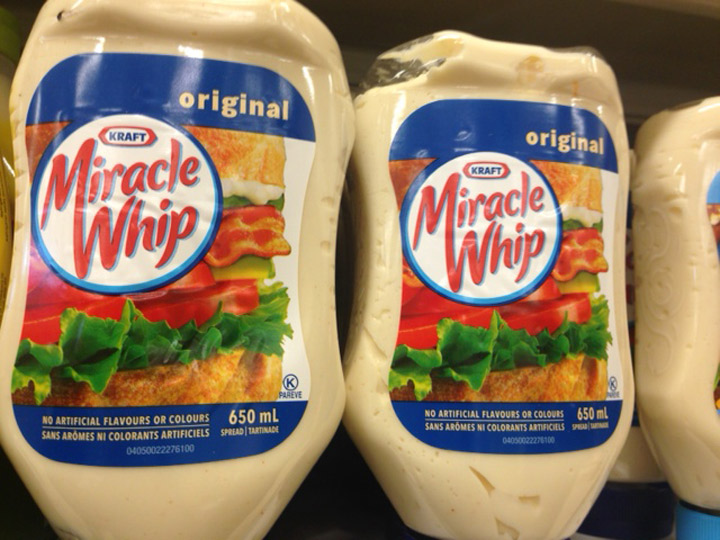TORONTO – There are the usual suspects for sugar: chocolate, candy and syrupy sweet drinks. But what about pasta sauce, yogurt and even bread?

Last week, the World Health Organization (WHO) dropped the gauntlet on consumers with its updated recommendations: sugar intake should be just five per cent of your total calories, half of what the global health agency had recommended years ago.
For an average woman who eats about 2,000 calories a day, that’s roughly 25 grams of sugar – less than half of a can of pop, about two portions of yogurt or an entire Caramilk bar.
READ MORE: WHO says only 5% of your calories should come from sugar, down from 10%
“It’s completely doable to be within that five per cent but it really means not treating yourself all day. Where it gets tricky is the nickelling and diming you can do with foods that you may not recognize as having any sugar in them,” Katie Jessop, a registered dietitian with the Heart and Stroke Foundation, said.
“It’s an interesting challenge,” Jessop told Global News.
The WHO says it hopes its recommendations make consumers cognizant that the food they may be eating isn’t fuel, but empty calories. So if your morning meal is a latte and a muffin, that’s more for feeding your growing waistline than your energy.
READ MORE: How much sugar is in Nutella? Canadian doctor decodes what’s in the hazelnut spread
The WHO says its draft guidelines apply to all monosaccharides – such as glucose and fructose – as well as sucrose or table sugar that are added to food by the manufacturer, cook or consumer. It even includes sugar naturally found in honey, syrups and fruit concentrates. But the global health body says most of the sugar we eat today is “hidden” in processed foods we wouldn’t think would have it.
Global News lists a handful of foods that slyly sneak in some sugar.
The surprises
- An Oikos Greek yogurt portion: 12 grams of sugar
- Veal Parmigiana frozen dinner: 8 grams of sugar
- Michelina’s General Tao chicken: 14 grams of sugar
- Wonderbread: 4 grams of sugar per two slices
- Canadian man dies during Texas Ironman event. His widow wants answers as to why
- On the ‘frontline’: Toronto-area residents hiring security firms to fight auto theft
- Honda’s $15B Ontario EV plant marks ‘historic day,’ Trudeau says
- Canadians more likely to eat food past best-before date. What are the risks?
Hold the sauce, please
- Kraft BBQ Sauce: 10 grams of sugar per two tablespoons
- Heinz Ketchup: 5 grams of sugar per tablespoon
- Plum sauce: 12 grams per two tablespoons
- Creamy poppy seed salad dressing: 4 grams per tablespoon
- Fat-free mayonnaise: 2 grams of sugar per tablespoon
- Bick’s Sweet Mix pickles: 8 grams per 3 slices
- Ragu tomato pasta sauce: 7 grams of sugar per half cup
What’s in your breakfast bowl
- Special K Vanilla Almond: 8 grams of sugar per cup
- Oatmeal Crisp: 14 grams of sugar per 2/3 cup
- Froot Loops or Frosted Flakes: 12 grams per cup
- Quaker Maple and Brown Sugar oatmeal: 14 grams of sugar per pouch
- Nature Valley granola bar: 12 grams of sugar per bar
The usual suspects
- Coke: 42 grams of sugar per 355 ml can
- Red Bull: 27 grams per 250 ml can
- Caramilk chocolate bar: 24 grams of sugar for the entire bar
- Breyer’s Ice Cream: 20 grams of sugar per half cup
- Minute Maid Grape Juice Box: 19 grams of sugar per juice box
- Gatorade G Force: 38 grams per 591 ml bottle
- Snack Pack chocolate pudding: 16 grams of sugar per 99 gram pudding cup
- Tropicana Tropics fruit juice: 28 grams per 250 ml cup
- Nutella: 11 grams of sugar per tablespoon
(Graphic courtesy Dani-Elle Dube)
carmen.chai@globalnews.ca
Follow @Carmen_Chai








Comments